Purple Loosestrife
Information
Lythrum salicaria - Lythraceae Family - Perennial
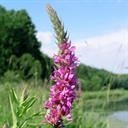
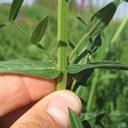
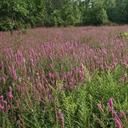
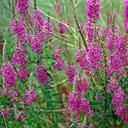
Identification
- Flowers: Showy magenta terminal spikes, with each flower having 5-7 petals.
- Seeds: Black seeds are contained in capsules. A mature plant can produce 2.7 million seeds.
- Leaves: Lanceolate, 1.5 to 4 inches long. Arranged in an opposite, alternate, or whorled manner along the stem. Stems are somewhat square with 4-6 sides.
- Flowering Time: April – May (after the first year). Seeds mature in June – July.
- Life cycle: Perennial. It can reach up to 10 feet tall and 5 feet wide and has a persistent, perennial tap root and spreading rootstock.
Impacts
- Invades wetlands, riparian areas, lakes, ponds, wet meadows, ditch banks and other areas with standing water.
- Purple loosestrife is a vigorous competitor and can crowd out other vegetation including native species.
- Loosestrife stands provide poor cover for waterfowl.
Control
Most effective control methods
- For small infestations, digging can be an effective control option. Cutting alone is not a control option for purple loosestrife, because shoots and adventitious roots will develop.
- Biological controls have shown excellent control for large infestations. Loosestrife beetles, Galerucella calmariensis and Galerucella pusilla, adults and larvae impact plant growth and reproduction by feeding heavily on the plant's leaves, stems and buds. The loosestrife root weevil, Hylobius transversovittatus adults feed on plant foliage and the larvae feed within the roots.
- Herbicide applications are not recommended because of the plant’s proximity to water.
Control methods and timing
| March | April | May | June | July | Aug | Sept | Oct |
|---|---|---|---|---|---|---|---|
|
Prev Mech |
Prev Mech |
Prev Mech Chem |
Prev Mech Chem |
Prev Mech Chem |
Prev Mech Chem |
Prevention (Prev) Monitor and destroy new plants before seed production.
Mechanical (Mech) Hand pulling, digging, cutting, mowing and tilling.
Cultural (Cult) Biological control agents, livestock grazing, and revegetation practices.
Chemical (Chem) Selective herbicides based on the plant and the specific location. Check our weed fact sheets for specific control information.
Large Images
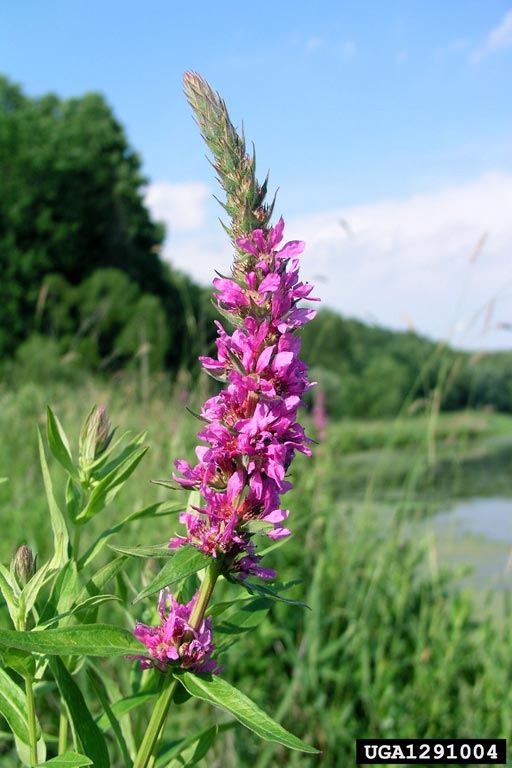
Purple loosestrife: flowers
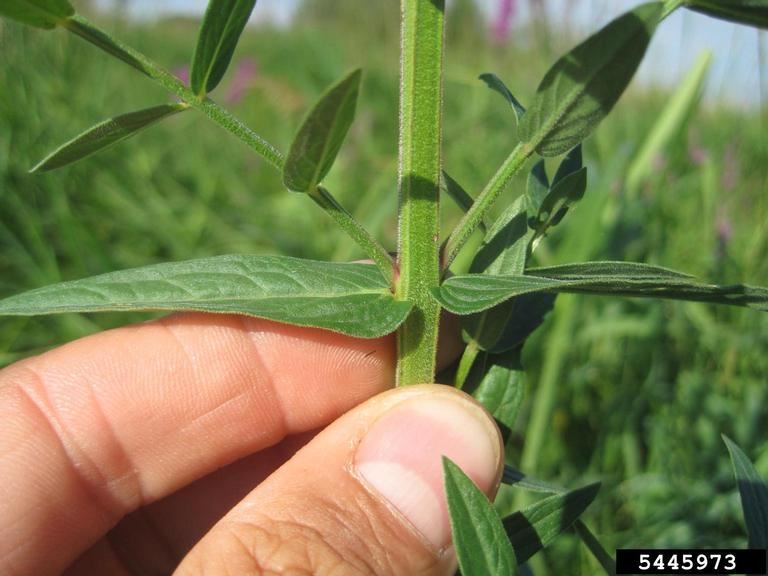
Purple loosestrife: square stem and foliage
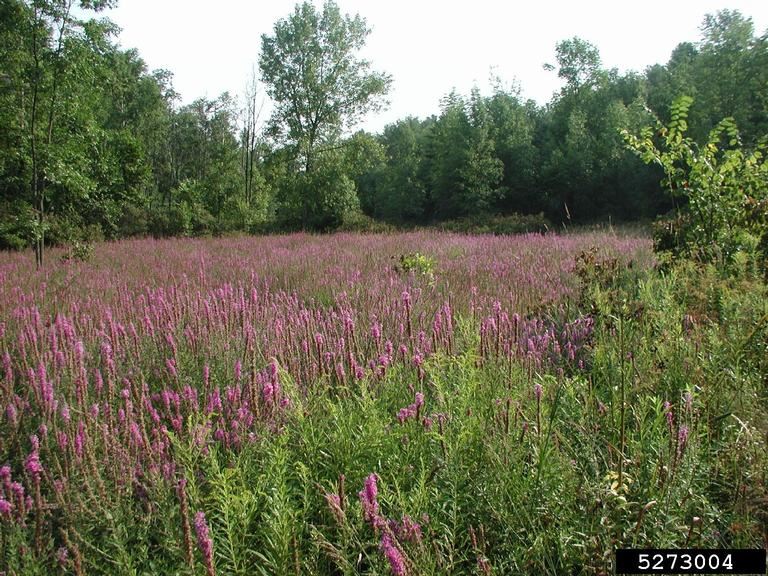
Purple loosestrife: infestation
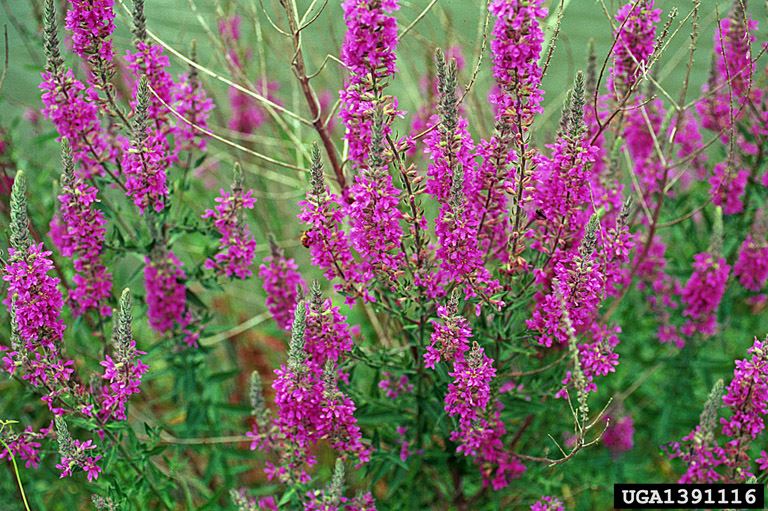
Purple loosestrife: flowers
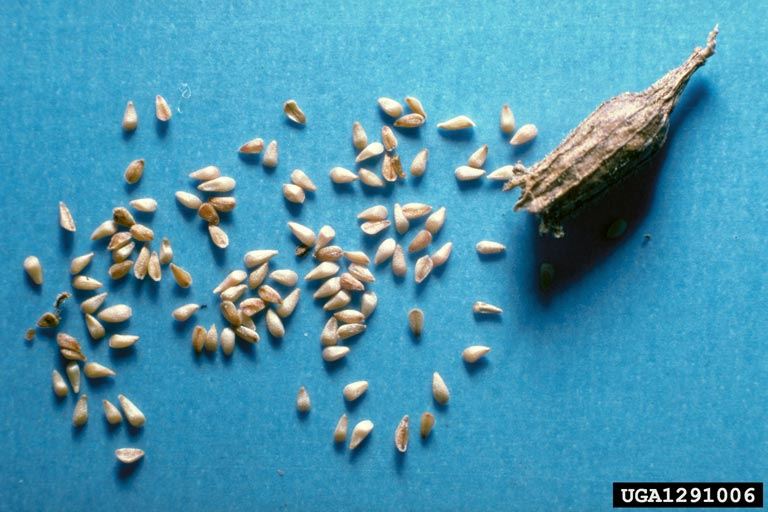
Purple loosestrife: seeds
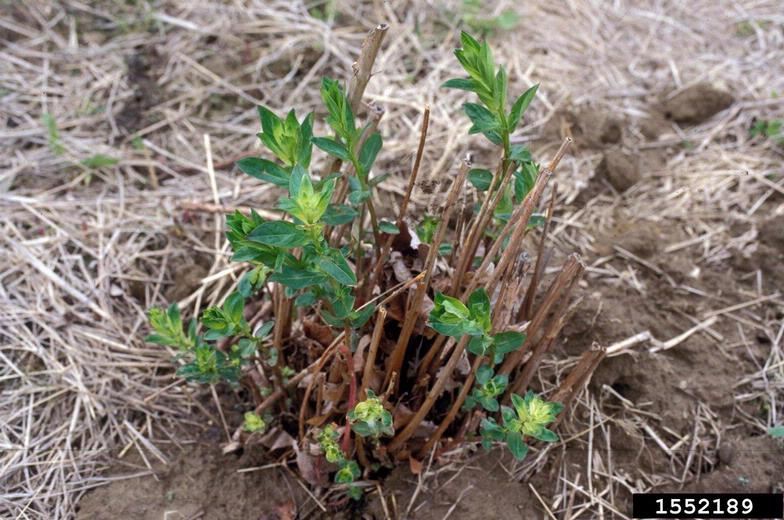
Purple loosestrife sprouting from rootstocks amid previous year's dead stems
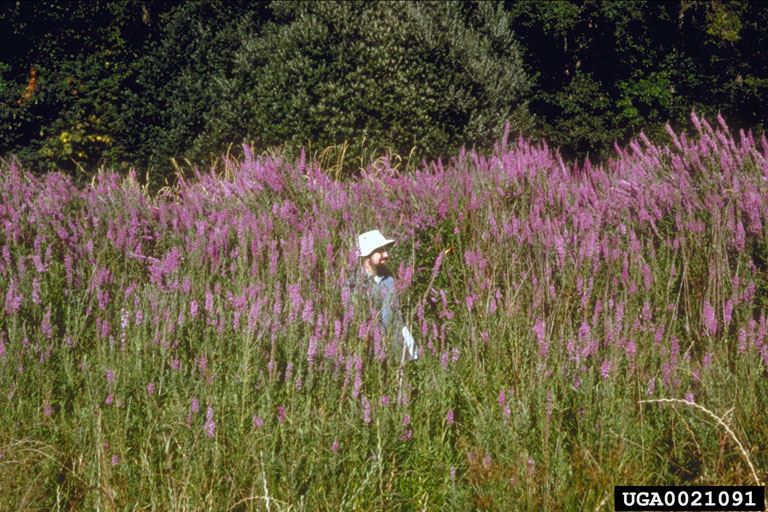
Purple loosestrife: infestation
Resources
-
-
References
Center for Invasive Species and Ecosystem Health at the University of Georgia. (2014, January 13). Lythrum salicaria. Retrieved from https://wiki.bugwood.org/Lythrum_salicaria
Duncan, C. (2018, April 10). Identification and management of purple loosestrife. Retrieved from https://www.techlinenews.com/articles/2018/identification-management-of-purple-loosestrife
Lym, R. (2018, April). Identification and control of purple loosestrife (lythrum salicaria l.). Retrieved from https://www.ag.ndsu.edu/publications/crops/identification-and-control-of-purple-loosestrife-lythrum-salicaria-l
Natural Resouces Conservation Services. (2006, July). Purple loosestrife – lythrum salicaria [PDF file]. Retrieved from https://www.nrcs.usda.gov/Internet/FSE_DOCUMENTS/stelprdb1081652.pdf View PDF
New Hampshire Department of Environmental Services. (2018). Purple loosestrife: an exotic menace [PDF file]. Retrieved from https://www.des.nh.gov/organization/commissioner/pip/factsheets/bb/documents/bb-45.pdf View PDF




